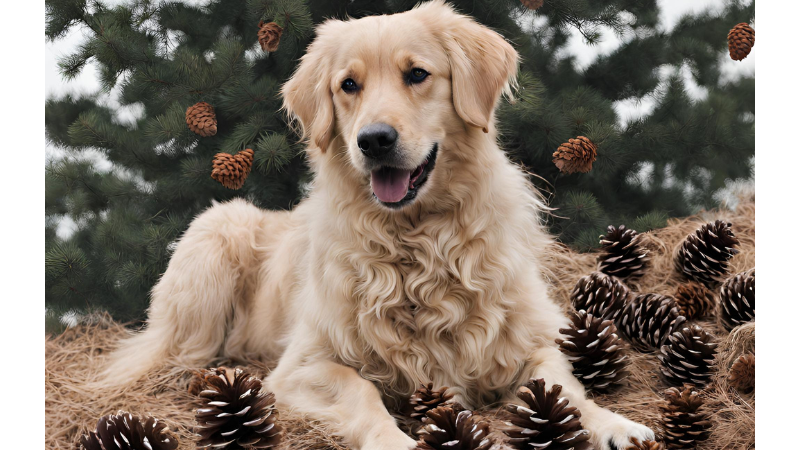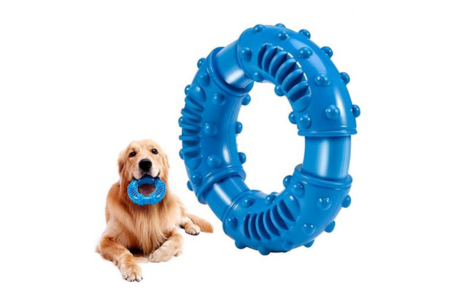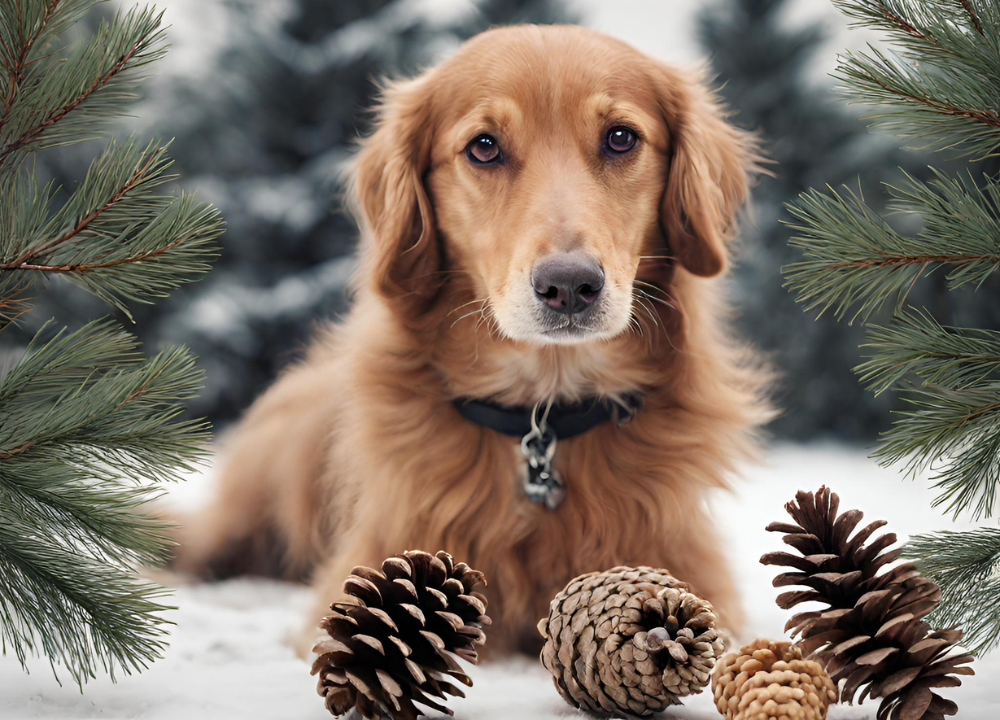Dogs are obsessed with pine cones due to their natural instinct to explore and interact with different objects. Dogs find pine cones interesting because of their texture, scent, and shape, which can provide mental and physical stimulation.
Dogs are curious creatures by nature, often fixating on the most peculiar things. One of the seemingly perplexing obsessions some dogs develop is with pine cones. You may have noticed your furry friend’s inexplicable fascination with these prickly cones and wondered why.
Rest assured, there is a perfectly reasonable explanation behind your dog’s pine cone fixation. Understanding the reasons behind this canine obsession can shed light on your dog’s behavior, allowing you to better address their needs and ensure their overall well-being. We’ll explore the possible reasons why dogs are drawn to pine cones and delve into the fascinating world of a dog’s sensory preferences. So, let’s unravel the mystery behind your dog’s pine cone infatuation.
Understanding Dog Behavior
As pet owners, we often find ourselves pondering over the different behaviors our furry friends display. Understanding dog behavior is crucial in maintaining their overall well-being and addressing any concerns that may arise. One behavior that may leave you scratching your head is your dog’s obsession with pine cones. In this article, we will delve into the reasons behind this peculiar behavior, shedding light on the instinctual and obsessive tendencies exhibited by dogs.
Instinctual Behaviors
Dogs have inherited a set of instinctual behaviors from their ancestors. These behaviors were necessary for survival in the wild, and although domesticated, dogs still exhibit them to some degree. One such behavior is the attraction to objects reminiscent of their natural habitat, namely pine cones.
1. Predatory instincts: Dogs have strong predatory instincts, and their fascination with pine cones can be attributed to their resemblance to small prey. The cone’s shape, size, and texture mimic that of a small animal, triggering their hunting instincts.
2. Exploration and scent: Dogs are natural explorers who rely heavily on their sense of smell to discover their surroundings. Pine cones emit a distinct scent that may pique their curiosity, making them particularly enticing objects to investigate.
Obsessive Behaviors
While a certain level of interest in pine cones is perfectly normal, some dogs may develop an obsessive behavior towards these objects. This obsessive behavior can manifest in various ways and should be observed carefully to ensure the well-being of your beloved pet.
1. Chewing and gnawing: Dogs with an obsessive tendency may chew and gnaw on pine cones excessively, causing potential damage to their teeth and gums. This behavior can also pose a choking hazard if small pieces are swallowed.
2. Guarding and possessiveness: Some dogs may become possessive over their prized pine cones, exhibiting guarding behaviors to protect them from outsiders. This possessiveness can lead to territorial issues and even aggression if not addressed properly.
To mitigate obsessive behaviors towards pine cones, it is essential to redirect your dog’s attention towards more appropriate toys and activities. Engaging your furry friend in interactive play, using puzzle toys, and providing mental stimulation can help divert their focus from pine cones.
In conclusion, understanding dog behavior involves recognizing both instinctual and obsessive tendencies exhibited by our canine companions. While the instinctual attraction to pine cones is rooted in their ancestral traits, it is important to monitor any obsessive behaviors that may arise. By redirecting their attention and providing suitable alternatives, we can ensure our dogs lead happy and healthy lives.

The Fascination With Pine Cones
Have you ever wondered why your dog seems to be obsessed with pine cones? The answer lies in their innate instincts and sensory preferences. From the sight and texture of pine cones to their enticing scent, and the opportunity they provide for chasing and retrieving, dogs find pine cones fascinating. Let’s explore these aspects in detail:
Sight And Texture:
One of the main reasons why dogs are drawn to pine cones is their intriguing sight and unique texture. With their natural curiosity, dogs are naturally attracted to objects that stand out visually. The elongated shape and rough surface of a pine cone offer a tantalizing contrast to their surroundings.
The protruding scales of a pine cone provide an interesting tactile experience for dogs. The combination of bumps and ridges adds sensory stimulation, allowing dogs to explore and manipulate the pine cone with their paws and mouth.
Scent:
In addition to their visual and tactile appeal, pine cones also emit a captivating scent that captures a dog’s attention. Dogs have an extraordinary sense of smell, up to 100,000 times more powerful than humans’. So, when they come across a pine cone, the aromatic fragrance triggers their instinctual response.
As dogs engage with the pine cone, they may use their nose to investigate the scent further, inhaling deeply to fully decipher the complex odors emanating from its surface. The scent of a pine cone may remind them of the natural outdoors, triggering their primal instincts.
Chasing And Retrieving Instinct:
The chase and retrieve instinct is deeply ingrained in many dogs, and pine cones provide the perfect opportunity to satisfy this instinct. As dogs spot a pine cone on the ground or in a tree, they become fixated on it, ready to chase and capture.
The erratic movements of a thrown or rolling pine cone mimic the behavior of small prey, triggering the predatory instincts in dogs. This exciting game of chase and retrieve taps into their natural hunting abilities, fulfilling their primal desire to pursue and capture moving objects.
So, next time you see your dog displaying an inexplicable fascination with pine cones, remember that it’s their way of connecting with their instincts and exploring their senses. Whether it’s the sight and texture, enticing scent, or the opportunity for chasing and retrieving, pine cones offer a fascinating experience for our furry friends.

Potential Reasons For Obsession
Do you ever find your furry friend fixated on a pile of pine cones during your outdoor adventures? While it may seem strange, your dog’s obsession with pine cones is not uncommon. There are a few potential reasons why these prickly, cone-shaped objects hold such fascination for our canine companions. Let’s take a closer look:
Natural Attraction
One possible reason for your dog’s pine cone obsession is their natural attraction to them. As descendants of wolves, dogs are instinctively drawn to objects found in nature. Pine cones, with their unique shape, vibrant scent, and intriguing texture, often captivate their attention. Dogs have an incredible sense of smell, and the enticing aroma of pine cones may be particularly appealing to them.
Sensory Stimulation
Pine cones offer dogs a range of sensory experiences, which can contribute to their fascination. The prickly texture of the cone’s scales provides tactile stimulation when your dog plays with or mouths the cone. The crackling sound made when the cone is crushed under their paw or in their mouth can be an enticing auditory experience. Additionally, the natural movement and unpredictability of a rolling pine cone can engage your dog’s sense of sight, further enhancing their fascination.
Comfort Object
Believe it or not, some dogs may view pine cones as comforting objects. Dogs, by nature, are den animals and have a natural instinct to gather and collect items that provide a sense of security. For some dogs, pine cones become cherished comfort objects that provide a sense of familiarity and companionship. Chewing or playing with a pine cone can help dogs alleviate anxiety, boredom, or stress, making it a go-to source of comfort.
In conclusion, it is not unusual for dogs to develop a strong fixation on pine cones. They are naturally drawn to these intriguing objects due to their inherent attractions, sensory stimulation opportunities, and potential as comfort objects. Understanding these potential reasons for obsession can help us appreciate our dog’s affinity for pine cones.
I recommend reading: Why Does my Dog Freak Out When i Sneeze
The Dangers Of Pine Cone Obsession
If you’ve ever wondered why your dog becomes fixated on pine cones during your walks in the park, you’re not alone. It’s a common behavior, and while it may seem harmless, there are several dangers associated with a dog’s obsession with pine cones.
Choking Hazard
The first and most obvious danger of a dog’s pine cone obsession is the risk of choking. Pine cones, with their irregular shape and prickly scales, can easily get lodged in a dog’s throat. This can lead to a life-threatening situation, requiring immediate veterinary intervention. Even if your dog manages to swallow a pine cone without choking, there is a risk of it causing an obstruction in the digestive tract, leading to severe discomfort and potentially requiring surgery to remove.
Digestive Issues
When dogs chew on or swallow pine cones, they may also encounter digestive issues. The sharp edges and tough texture of pine cones can cause irritation and small cuts in the mouth, throat, and stomach. This can lead to inflammation, pain, and even bleeding. Additionally, the indigestible nature of pine cones can disrupt the normal digestion process, resulting in vomiting, diarrhea, and constipation. These gastrointestinal issues can be uncomfortable for your dog and may require medical treatment to alleviate.
Toxicity
Another lesser-known danger of a dog’s pine cone obsession is the risk of toxicity. Some species of pine trees produce resins and oils that can be toxic to dogs. When a dog chews on or ingests pine cones from these species, it can result in poisoning. Symptoms of pine cone toxicity can vary but may include gastrointestinal upset, weakness, seizures, and even organ damage. If you suspect that your dog has ingested pine cones from a toxic species of pine tree, it’s crucial to seek veterinary assistance immediately.
While it’s natural for dogs to be curious and explore their surroundings, it’s essential to be aware of the potential dangers associated with their obsession with pine cones. Regularly inspect your dog’s play area, and if you notice any pine cones present, remove them promptly to mitigate the risk. Remember, prevention is key when it comes to keeping your furry friend safe and healthy.
Managing Pine Cone Obsession
Discover why dogs have a fascination with pine cones and learn how to manage this obsession for a happier and safer furry companion. Gain insights into the reasons behind this behavior and find strategies to redirect their attention to more appropriate activities.
Pine cones may seem harmless, but when your dog becomes obsessed with them, it can be a cause for concern. Not only can it lead to destructive behavior, but it can also pose a health risk to your furry friend. To help you manage this obsession, we have outlined some effective techniques that you can employ. By implementing these strategies, you can redirect their focus and ensure your dog’s safety and well-being.
Training And Distraction Techniques
When it comes to managing your dog’s pine cone obsession, training and distraction techniques can be highly effective. By redirecting their attention to alternative activities, you can help break the cycle of fixation. Here are some training methods to consider:
- Teaching the “Leave It” Command: Start by giving the command “leave it” whenever you see your dog approaching a pine cone. Reward them with treats and praise when they respond correctly. With consistent practice, this command can be a reliable tool to redirect their focus.
- Socialization and Enrichment: Engaging your dog in interactive play sessions or enrolling them in obedience training classes can help distract them from pine cones. Not only will these activities provide mental stimulation, but they will also strengthen the bond between you and your furry friend.
- Using Puzzle Toys: Provide your dog with puzzle toys filled with treats to divert their attention away from pine cones. These toys will keep them occupied and mentally stimulated, reducing their fixation on pine cones.
Providing Safe Alternatives
To discourage your dog from obsessing over pine cones, it is essential to provide safe alternatives that fulfill their chewing and playing needs. Consider the following alternatives:
- Durable Chew Toys: Invest in durable chew toys specifically designed for dogs. These toys are not only great for their dental hygiene but also help redirect their chewing tendencies away from pine cones.
- Fetch and Tug-of-War Games: Engage your dog in games like fetch or tug-of-war using dog-friendly toys. These activities provide a healthy outlet for their energy and can redirect their fixation on pine cones.

Consulting A Veterinarian Or Animal Behaviorist
If your dog’s pine cone obsession persists or poses a serious risk to their health, it is crucial to seek professional help. Consulting a veterinarian or an animal behaviorist can provide valuable insights and tailored solutions to manage this behavior. They can help identify any underlying issues contributing to the obsession and develop a personalized training plan to address it effectively. Remember, managing your dog’s pine cone obsession requires patience, consistency, and understanding. By implementing the training and distraction techniques, providing safe alternatives, and seeking professional guidance, you can help redirect their focus and ensure their well-being.
Addressing Other Obsessions
Identifying Obsessive Behaviors
When it comes to understanding your dog’s behavior, it’s important to identify obsessive behaviors early on. These behaviors can range from fixating on certain objects to engaging in repetitive actions. One common obsession that dog owners often notice is their dog’s fascination with pine cones. However, this is just one example of many potential obsessions that your furry friend may develop.
Recognizing the signs of obsessive behavior is crucial for addressing the issue effectively. Some common signs to look out for include:
- Constant fixation on a particular object, like pine cones
- Excessive licking, chewing, or scratching
- Compulsive tail chasing or pacing
- Repetitive barking or vocalization
- Intense anxiety or distress when the object of obsession is not present
- Disinterest in other activities or toys
Understanding The Root Cause
Identifying the root cause behind your dog’s obsession is crucial to addressing the behavior effectively. In the case of pine cone obsession, it’s essential to understand that dogs are natural scavengers, and their instincts lead them to explore different objects. The texture, scent, and shape of a pine cone can be intriguing to them.
Other potential reasons for obsessing over pine cones or other objects may include:
- Lack of mental stimulation
- Anxiety or stress
- Compensating for boredom or loneliness
- Past trauma or negative experiences
- Desire for attention or reward
Implementing Behavior Modification
Once you have identified the root cause of your dog’s obsession, it’s time to implement behavior modification techniques to help them overcome it. Here are a few strategies to consider:
- Positive Reinforcement: Reward your dog with treats, praise, or playtime when they divert their attention from the object of obsession to a more appropriate behavior or toy.
- Redirecting Focus: Engage your dog in mentally stimulating activities, such as puzzle toys or interactive play sessions, to redirect their attention away from the object of obsession.
- Environmental Management: Limit access to the object of obsession by keeping it out of reach or blocking access to certain areas of your home or yard.
- Consistency: Be consistent with your training and reinforcement techniques to reinforce positive behaviors and discourage obsession.
- Seek Professional Help: If your dog’s obsession persists or becomes increasingly problematic, consult with a professional dog trainer or behaviorist for expert guidance and assistance.
Frequently Asked Questions Of Why Is My Dog Obsessed With Pine Cones
Why Do Dogs Love To Play With Pine Cones?
Dogs are instinctually drawn to the texture and scent of pine cones, which resemble objects in their natural environment. They enjoy the challenge of chasing, chewing, and retrieving them. However, always supervise your dog while playing with pine cones to ensure they don’t ingest any small pieces.
Is It Safe For Dogs To Chew On Pine Cones?
While it’s generally safe for dogs to chew on pine cones, there are some risks involved. Small pieces can break off and potentially cause choking or gastrointestinal blockages. Ensure the pine cones are clean and free from pesticides or chemicals.
Monitor your dog closely and remove the pine cone if it starts to break apart.
How Can I Prevent My Dog From Obsessively Playing With Pine Cones?
To prevent your dog from becoming too obsessed with pine cones, provide plenty of other stimulating toys and activities. Engage them in regular exercise and play sessions to redirect their attention. If necessary, use positive reinforcement training techniques to teach your dog to ignore pine cones and focus on other objects.
Can Playing With Pine Cones Be Harmful To My Dog’s Teeth?
While playing with pine cones can help clean your dog’s teeth, excessive chewing can lead to dental issues. The rough texture of pine cones can cause wear and tear on their teeth over time. If your dog is an aggressive chewer or has dental problems, it’s best to provide safer chew toys specifically designed for dental hygiene.
Conclusion
To sum up, the obsession that some dogs have with pine cones is perfectly normal and common. It could be attributed to their natural instincts to hunt, play, or even chew on objects found in their environment. So, if your furry friend is fixated on pine cones, don’t worry! Just ensure their safety by monitoring their interactions and providing appropriate toys and activities.








